The put-in is quiet as I unload my boat from the back of my truck. It’s 11 a.m. on a Tuesday, and I couldn’t find any boating partners today, which means I am kayaking alone.
The Experience of Kayaking Alone
Paddling solo is a much different experience than paddling with a group. Not because I need to be more focused on safety—I have been paddling this stretch of river since I was 13 years old and I know I am not going to swim.
I also know if something happened and I did end up swimming, I would still be fine. The rapids are deep, short and without consequential hazards.
Instead, my experience changes because my mindset changes. When I am with a group, I feel the need to show off. I feel the need to paddle my best. To throw my biggest downriver freestyle moves. To catch the most eddies. I think it stems from my competitive personality. My desire for perfection. It is one of my worst personality traits.
But when I am paddling solo, all of that goes away. I don’t need to be the best. I don’t need to show off. I don’t need to be perfect. I can just be. I can just paddle.
Reasons For Going Alone
Everyone has a different reason for kayaking alone. In 1992, Doug Ammons became the first to solo the Grand Canyon of the Stikine. To this day, his descent remains one of the most notable accomplishments in whitewater history.
“I get immense pleasure and inspiration from the experience,” Ammons says. “Words and social concerns disappear, and you are left with a single important reality, which is the flow of the river.” He describes soloing as one of the easier ways of entering flow state.
Psychologist Mihály Csíkszentmihályi defines flow state as “being completely involved in an activity for its own sake. The ego falls away. Time flies. Every action, movement and thought follows inevitably from the previous one, like playing jazz. Your whole being is involved, and you’re using your skills to the utmost.”
With a Ph.D. in psychology, Ammons knows flow state well. For him, “The key to entering a flow state is focusing on what you wish to accomplish physically, and completely giving yourself up to it. Setting all fear or threat aside, all judgment and criticism, all comparisons and all social concerns—having all the barriers down.”
The Flow State
This notion of experiencing flow state while solo is not limited to kayaking. Free solo climber and BASE jumper Steph Davis experiences flow state most easily when she is climbing without a partner.
“For me, a big factor for reaching focus, or flow, is getting away from outside energy—so free soloing inherently works really well because you are alone,” says Davis.
Alex Honnold, famous for his free solo climb up El Capitan in Yosemite, says flow doesn’t come as easily when climbing with ropes and a partner.
“I think a big part of the pleasure in free soloing is that it forces you into that state more than other kinds of climbing,” he says.
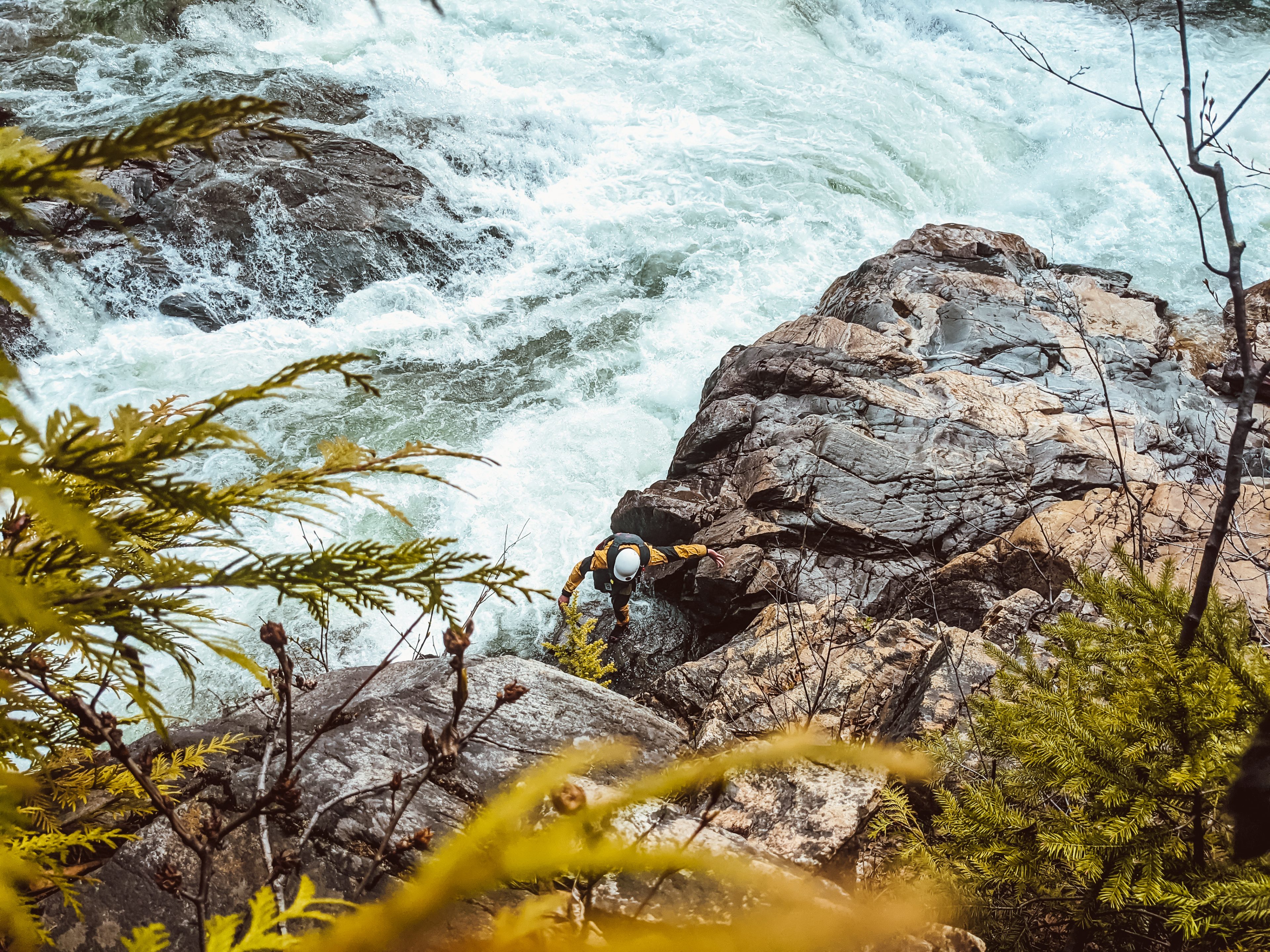
The Never Paddle Solo Rule
In every beginner whitewater course, students are told never to paddle alone. I teach this rule, and yet I don’t follow it. I paddle alone often. Whether it be a flatwater sprint workout, a freestyle session in the whitewater park or a river run, I break this rule all the time. So why do I teach this to beginners?
“It is an important rule to impregnate into new kayakers and the up-and-coming kids who watch YouTube videos,” says 10-time Green Race champion Adriene Levknecht.
“The people who are solo paddling have been in it for a very long time, and they understand the underlying danger.” In her view, the danger of kayaking alone isn’t less for experienced kayakers, but the risks are better understood and accepted by the paddler.
Ammons has a different view. “Bullshit,” he says when asked whether he agrees with the never-paddle-alone rule. “The bottom line is even when you’re in a group, you take every paddle stroke alone.
You are the captain of your own ship; you are always soloing even in a group. I’d say 90 percent of having partners is purely social, and less than 10 percent is safety.”
In Ammons’ view, even paddlers in a group are soloing. “Beginners are fine paddling solo as long as they stay within simple situations, like near the bank in slow-moving flatwater, or on a pond,” Ammons believes.
Do You Go Kayaking Alone?
Considering Ammons’ opinion, I began to ponder my thoughts on running hard whitewater. My personal view of running consequential rapids is I need to be 100 percent confident on my line before running the rapid. If I am not 100 percent, I portage.
With this mentality, there is no need for me to depend on paddling partners for safety purposes. If I am 100 percent confident on my line, I should be able to run those difficult and consequential rapids solo just as easily as with a group.
And yet, this is not what happens. I usually cut myself off of kayaking alone at class IV-, where I feel extremely comfortable.
“Most of the negative attitude toward soloing is merely the sense of security people have when other people are close, so in this way, it can easily blind you to the reality of their situation,” adds Ammons. “The real question is, do people want to believe things because they comfort us? Even if they only give a false sense of security?”
Go Alone, Be Safe
Of course, the sense of security a group provides isn’t always false, which Ammons admits.
I have both witnessed and experienced instances where paddling partners have pulled each other out of risky situations, relied on one another for a throw rope or live bait, and saved each other’s lives.
Mistakes on the river happen. We swim. We get beat down. We get pinned. And in those instances, a paddling partner who helps you clean up your mess is a lifesaver—even if only 10 percent of the time.
Nouria Newman, one of the best whitewater kayakers in the world, recently completed a seven-day solo expedition of the remote Zanskar and Indus rivers in northern India.
On day two of her expedition, she got stuck in a siphon. Luckily, she made it out unscathed. Her response after the expedition?
“Why go solo when you can go with friends.”
This article was first published in Issue 57 of Paddling Magazine. Subscribe to Paddling Magazine’s print and digital editions, or browse the archives.




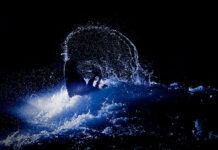
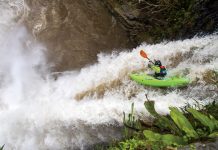
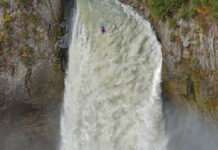
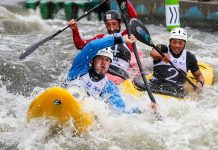

I don’t whitewater, all the way down here at the southern tip of NJ, there is no white water. Our rivers are slow moving, placid, and partly tidal. I solo all the time, partly because I do not know any other paddlers, but mostly because I paddle to get away from people. “Flow” is a state of mind, it’s very buddhist in that you are in the now. There is no tomorrow, there is no yesterday, there is only the now. Letting your mind wander away from what you are doing now while kayaking is the quickest way to taking an unwanted bath. Paddling is my meditation, my rejuvenator, and my personal way to get through the work week. This is why I always paddle solo.
I Solo cause what I been doin for over a year campin canoeing, ain’t fun to most folk.To do this everyday no car never know where I’m campin tat night, gettin up early man, makin breakin camp tats da work when you carry so much gear.Shoot seems like it’s dark all da time with these short winter days, this ain’t fun to most folks cause man it’s work.ROUTINE,STAYIN DRY that’s the game doin this kind of thing, eatin the same stuff everyday protein carbos forget what it tastes like but this “Flow State” you talk about yea there times where I feel that, I suppose I share it with da river, da trees that cover me butt, but remember ONE THING, you NEVER paddle a river, lake, ocean – the water lets you paddle her !!!